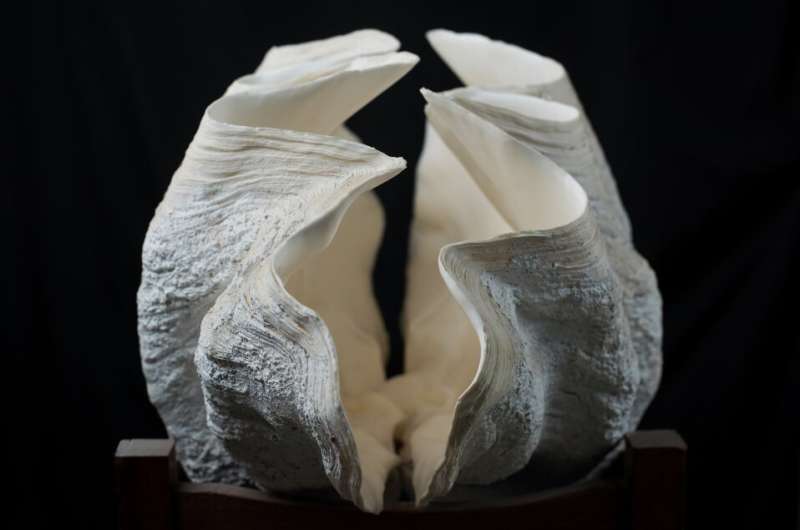Giant Clam shells (alive) Credit: YAN Hong, et al.
Paleoclimate research offers an overview of Earth's climate change over the past 65 million years or longer and helps to improve our understanding of the Earth's climate systems.
Unfortunately, our knowledge of weather-timescale extreme events (i.e., paleoweather occurring in days or even hours and minutes), such as tropical cyclones, cold/heat waves, and rainstorms under different climate conditions, is almost absent because current paleoclimatic reconstructions rarely provide information with temporal resolutions shorter than a month. A new Chinese study may remedy this problem, though.
Recently, a research team led by Prof. Yan Hong, from the Institute of Earth Environment (IEE) of the Chinese Academy of Sciences, found that shells of the giant clam (Tridacna, the largest bivalve species in the ocean) from the western Pacific have clear and continuous daily growth bands.
Several daily to hourly biological and geochemical records, including daily growth rate, hourly element/Ca ratios and fluorescence intensity, were developed from the daily bands of Tridacna shells.
The researchers demonstrated that these ultra-high resolution records can clearly record, even quantitatively, the activities of past typical extreme weather events.
Giant Clam shell (dead) Credit: YAN Hong, et al.
"This result indicated that Tridacna shells have the potential to be used as an unprecedented archive for Paleoweather reconstructions," said Prof. Yan.
As a result, fossils shells from different geological epochs have the potential to provide paleoweather data from past warm and warming periods that can help improve the prediction of future extreme weather events under the expected global warming.
More information: Hong Yan el al., "Extreme weather events recorded by daily to hourly resolution biogeochemical proxies of marine giant clam shells," PNAS (2020). www.pnas.org/cgi/doi/10.1073/pnas.1916784117
Journal information: Proceedings of the National Academy of Sciences
Provided by Chinese Academy of Sciences























